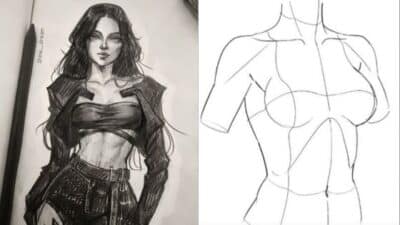Drawing the female body is a skill that blends observation, anatomy, and creativity, leading to more natural and expressive artwork. Learning to accurately depict the structure, movement, and subtle details of the female form is essential for developing your abilities as an artist. With the right techniques and an understanding of proportions, you can confidently approach figure drawing and improve your results.
Exploring poses, gestures, and unique characteristics helps you bring life and personality to your art. From sketches to polished illustrations, each drawing benefits from attention to form and thoughtful use of line and shading. By focusing on both foundational principles and your own creative style, you will develop a stronger grasp on female body drawing.
Key Takeaways
- Understanding basics boosts your confidence in drawing the female form.
- Practicing structure and line work is vital for accurate and expressive results.
- Mixing technique with creativity helps you find your unique artistic voice.
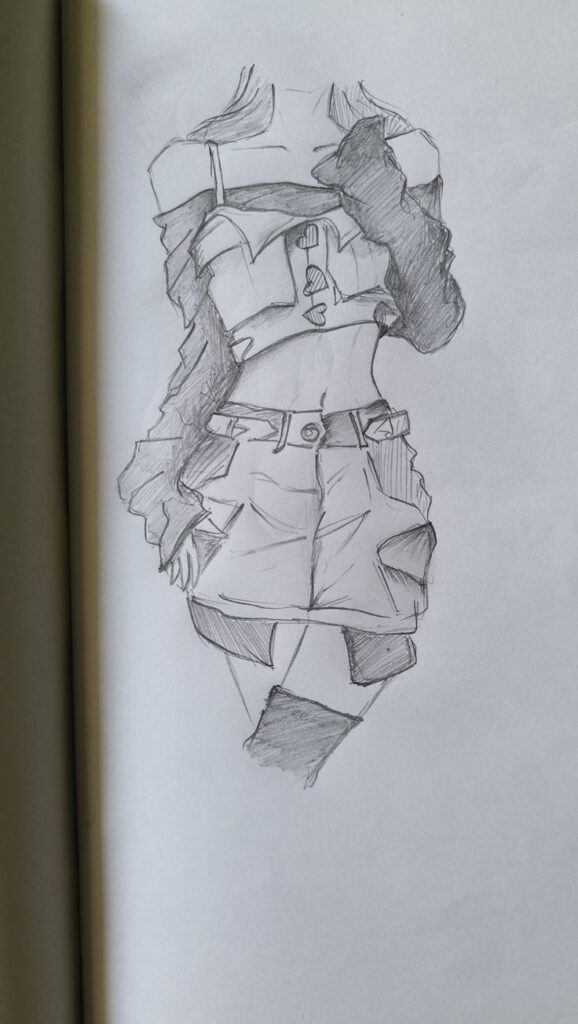
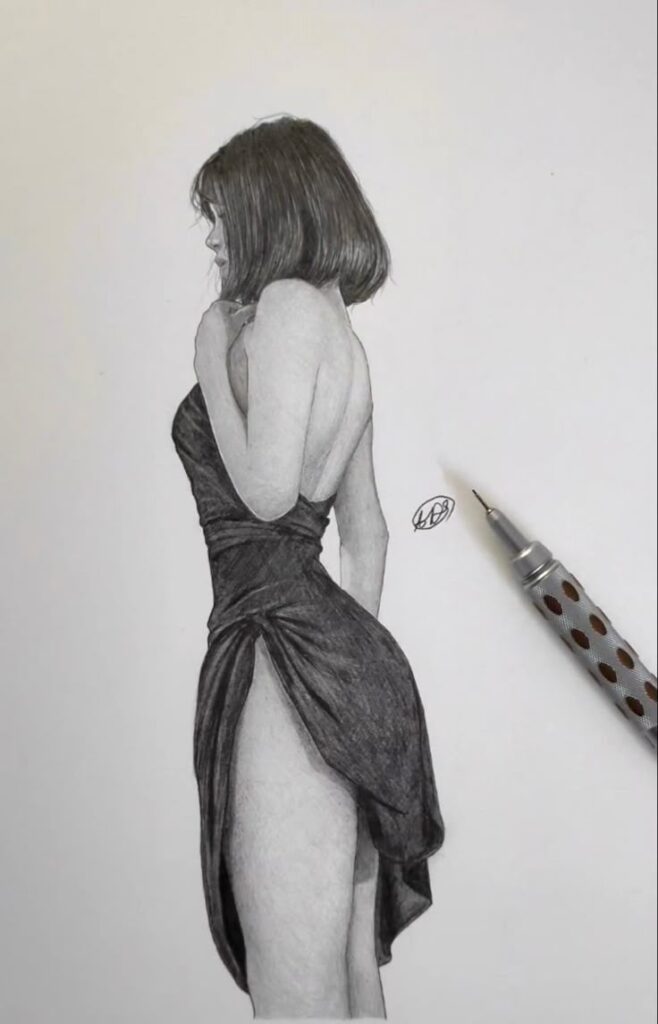
Fundamentals of Female Body Drawing
When sketching a female body, you must pay close attention to proportion, anatomical structure, and the quality of your drawing tools. Mastering these elements helps create realistic, expressive, and accurate outlines of the female figure.
Understanding Body Proportions
Proportions define how each part of the body relates in size to the rest. The average adult woman’s body is typically about 7 to 7.5 heads tall. Shoulders are usually narrower than in the male figure, often about 2–2.5 head widths wide.
The torso is longer and features a natural curve at the waist, creating an hourglass silhouette. The hips tend to be wider than the shoulders, and legs are long compared to the torso.
It helps to lightly sketch guidelines indicating head, chest, waist, hips, and knees. These marks act as anchors, ensuring the outline of your person matches realistic anatomy.
Basic Anatomy for Artists
A solid grasp of female body anatomy ensures your figure sketches capture natural poses and movement. Focus on the skeletal structure first—understand the placement of the spine, pelvic tilt, ribcage, and shoulder girdle.
Key areas to study include:
- Hips: Generally wider and rounder in women.
- Waist: Noticeable inward curve.
- Chest: Softer transitions, with the breasts attached along the chest wall—not floating shapes.
Remember how muscles and fat layer over the skeleton, creating the form visible in your drawing. Observe reference photos to note subtle differences in posture, muscle mass, and curves unique to the female outline.
Essential Drawing Materials
Choosing suitable drawing materials influences the quality and flexibility of your sketches. Graphite pencils in a range of hardness (2H, HB, 2B) let you create different line weights and values. Many artists also use a kneaded eraser to refine outlines without smudging the paper.
Quality sketch paper prevents unwanted bleeding or tearing. Some prefer smooth Bristol paper for crisp lines, while others like textured surfaces for softer shading.
Keep a ruler handy for measuring proportions and a blending stump for refining the figure’s shadows. Having these tools ready supports cleaner, more accurate figure drawing sessions.
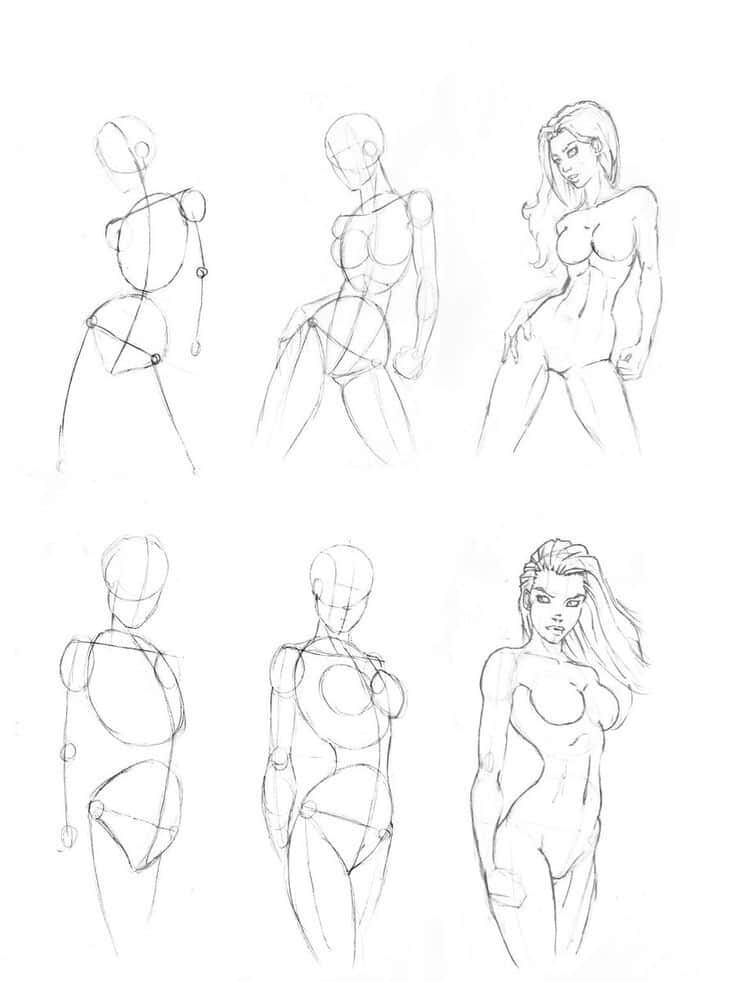
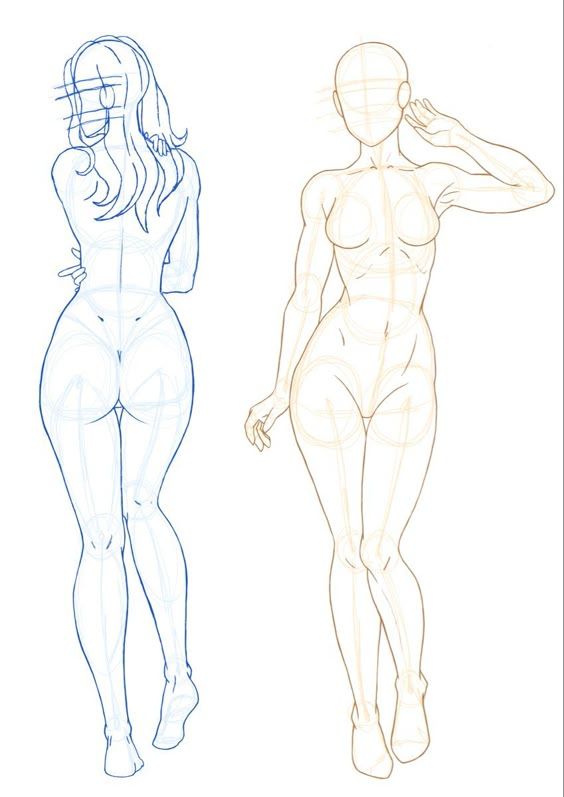
Mastering Line and Form
Developing skill with line styles and forms can change the way your female body drawings look and feel. Focused use of lines, outlines, contours, and silhouettes leads to strong, recognizable, and expressive artwork.
One Line Drawing Techniques
One line drawing uses a continuous, unbroken line to render the subject without lifting the tool from the paper. This method encourages observation and planning, forcing you to simplify the form and focus on key shapes of the female body.
You will need to choose where to begin—often at a shoulder or head—and move confidently to capture each part in a single motion. Mistakes can’t be erased, so this technique improves hand-eye coordination and encourages bold mark-making.
Tips:
- Study basic anatomy first
- Keep the wrist loose
- Emphasize major curves such as hips and waist
This technique is especially effective for warm-ups, gesture studies, and expressive figure sketches.
Contour and Silhouette
Contour drawing focuses on outlining the visible edges and subtle shifts in form. It helps define the shape and volume of the figure precisely. Silhouette drawing, by contrast, fills or outlines the entire shape, capturing the mass and pose at a glance.
When drawing contours, pay attention to the curve of the spine, profile of the limbs, and the relationship of torso and pelvis. Break the female body down into basic shapes and map the outline confidently.
A well-rendered silhouette can indicate action, attitude, and proportion using only the body’s outline, making it a powerful tool for figure design and animation.
Linear and Minimal Styles
Linear drawing styles rely on clear, purposeful lines to describe both the structure and posture of the figure. Use varying line thickness to suggest depth or emphasis—for example, thicker lines for the outer edge and delicate lines for inner details.
Minimal drawing reduces the figure to its most essential lines and shapes. Decide which lines communicate the fullness of the pose and leave out unnecessary details. This approach is useful in fashion sketching and quick studies, letting you focus on capturing the energy and flow.
Experiment with combinations of outline, short marks, and line breaks to achieve a distinctive look. Use sparing detail in key areas such as the collarbone, waistline, or knees to keep the drawing clear and readable.
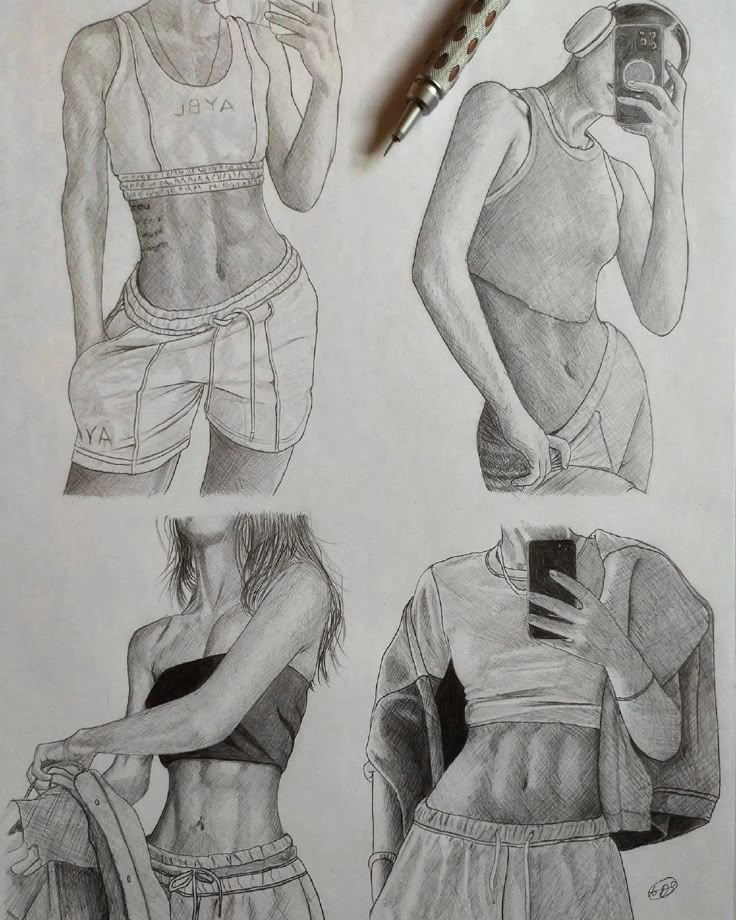
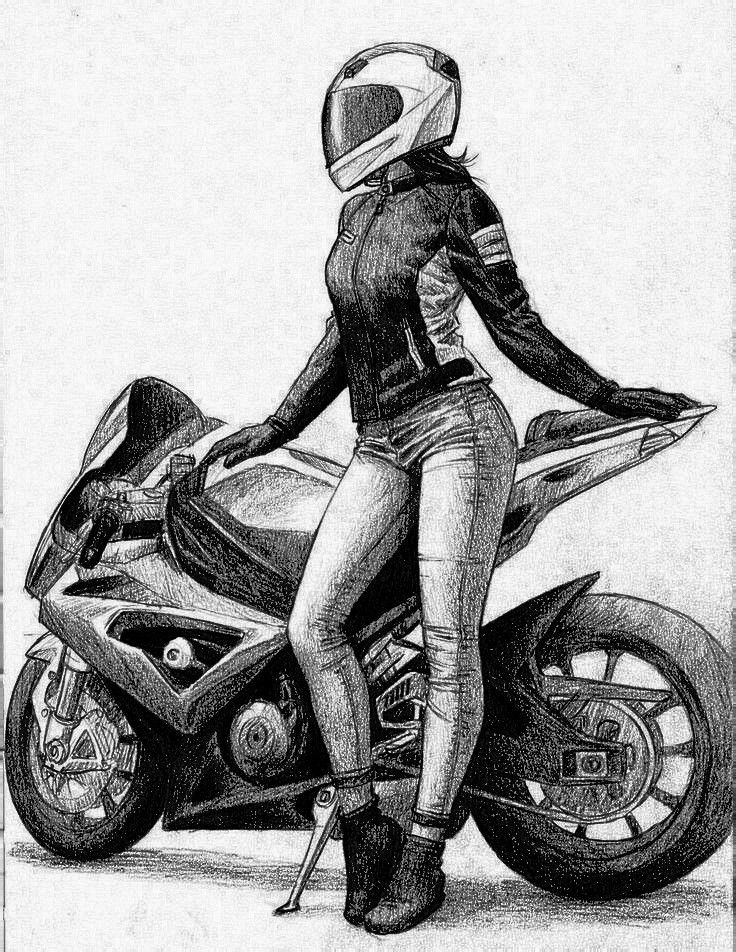
Poses, Movement, and Expression
Strong figure drawing requires a solid understanding of poses, correct depiction of movement, and the ability to convey emotion or intent through body language. Each area has distinct tools and strategies that can help you create more convincing and dynamic drawings of the female body.
Drawing Dynamic Poses
Dynamic poses bring energy and realism to your figure drawings. To achieve this, study real people in motion or use reliable figure reference tools that show the body in a variety of stances and activities.
When sketching a pose, start with gesture lines that capture the action and flow of the body. Avoid stiff, straight lines—curved and angled lines typically create a greater sense of motion.
Use basic shapes like cylinders, ovals, and boxes to build the pose’s structure. This helps you understand the orientation of the body, limb foreshortening, and spatial relationships. Keep proportions in mind, referencing anatomical landmarks such as shoulders, hips, knees, and the curve of the spine.
Practice quick, timed sketches—often called gesture exercises—to improve the fluidity and confidence of your poses. Drawing from photo sequences or live models can help you capture a broader range of stances and attitudes.
Capturing Movement and Action
Movement in drawing is about more than just depicting limbs in different positions. It involves showing how weight shifts, muscles contract, and the body balances during various activities. Start by identifying the center of gravity and base of support in your figure.
Observe how actions like running, dancing, or reaching involve twists, stretches, and compression throughout the body. The line of action—a single sweeping curve representing the dominant motion—can help unify the entire pose.
Break down complex movements by looking at them frame by frame, as in high-resolution motion references. Notice overlapping forms, trailing limbs, and the tension or relaxation in different muscle groups. Emphasize these elements in your sketches to create a feeling of life and activity.
Use contrapposto (opposing angles in the hips and shoulders) to add naturalism and rhythm. Consistent practice drawing from motion references sharpens your ability to depict believable actions.
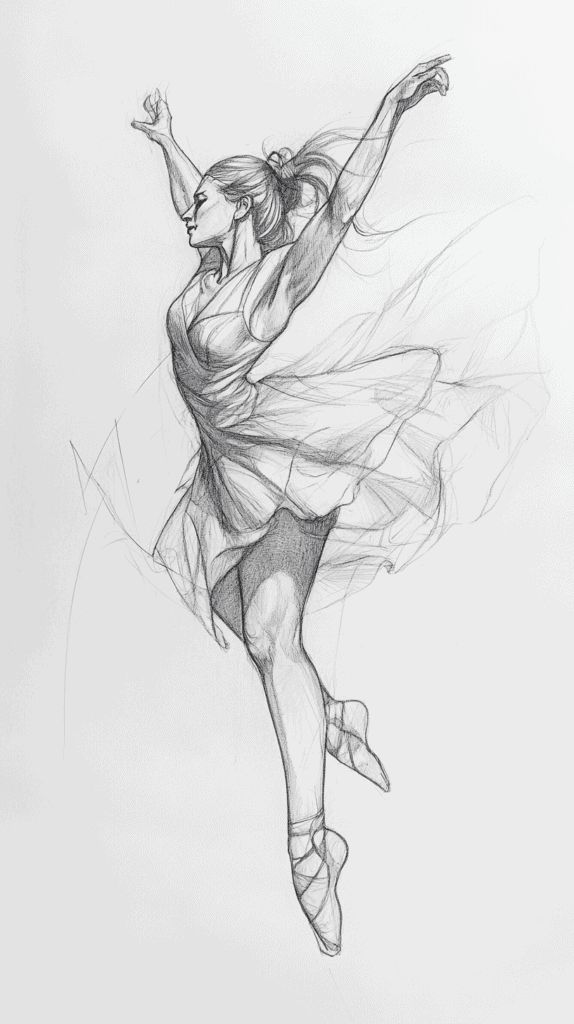
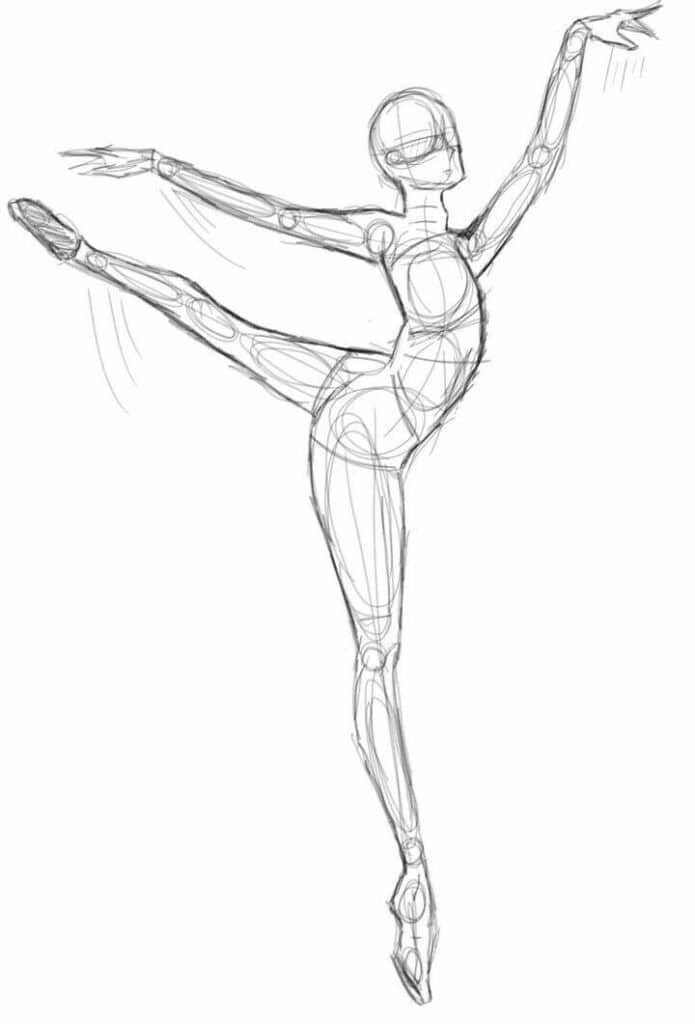
Expressive Gestures
Gesture drawing focuses on the essence of the pose rather than fine details. To capture expression in the female body, observe slight shifts in posture, tilt of the head, arrangement of hands, and subtle changes in weight distribution.
Small variations in pose communicate a wide range of emotions and attitudes, such as confidence, tension, or relaxation. Use quick, loose lines to record these characteristics, and try to finish each gesture sketch within 30-90 seconds.
Hands, faces, and the curve of the torso often carry much of the expressive content in a figure drawing. Referencing real-life or photographic expression studies can expand your understanding of body language.
As an exercise, create a table tracking different poses alongside the emotions they suggest, which can help you refine your interpretation skills:
| Pose Type | Key Gesture | Suggested Emotion |
|---|---|---|
| Arms crossed | Shoulders hunched | Defensiveness |
| One hip popped | Head tilted, relaxed hand | Confidence |
| Arms spread, back arched | Face lifted, open palm | Joy/Openness |
By focusing on gesture and expression, you make your female figures more engaging and narratively rich.
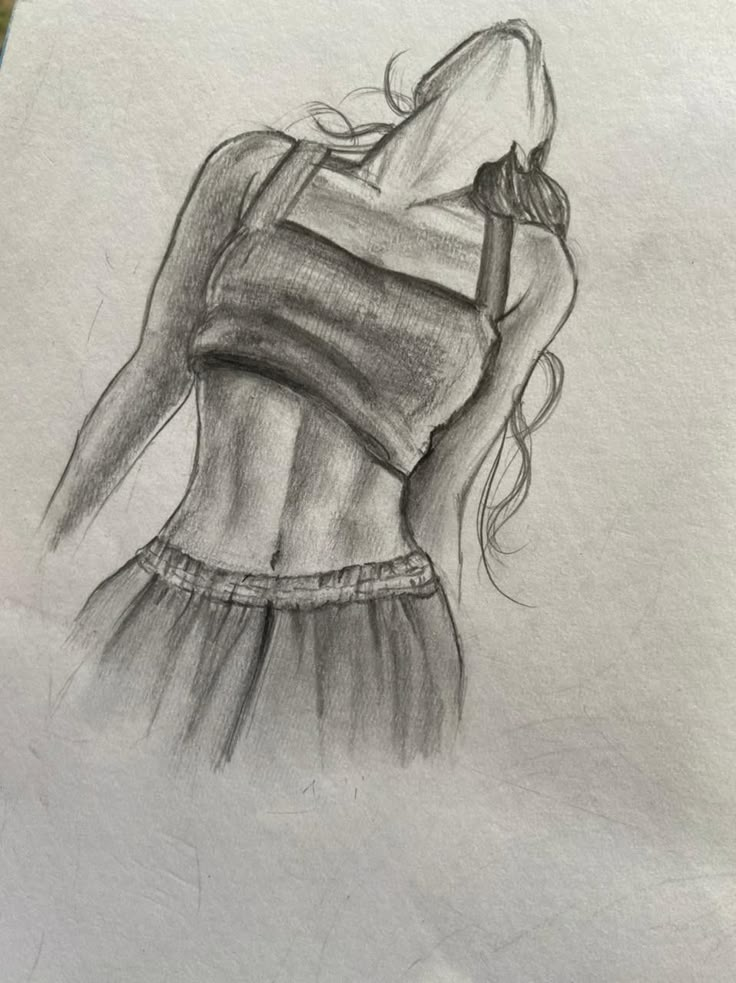
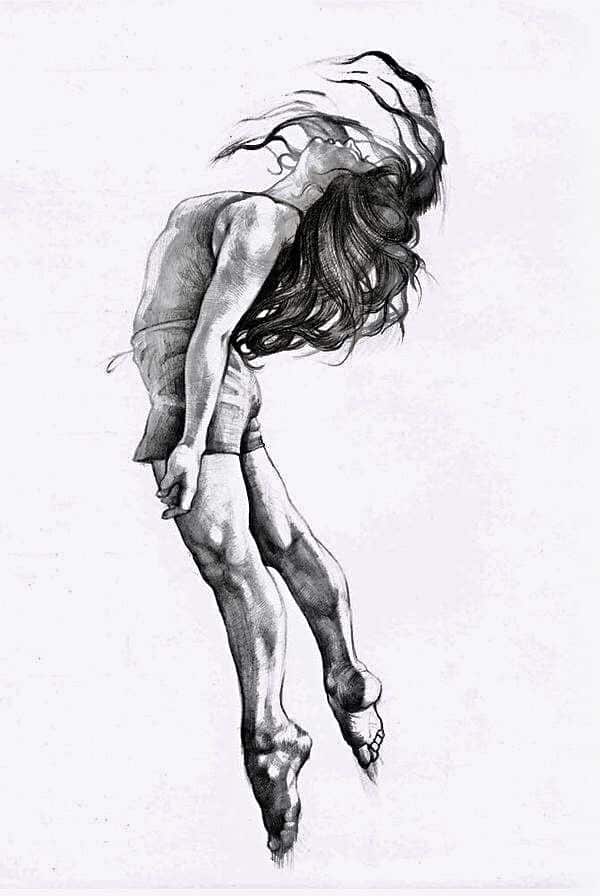
Detailing: Features, Muscles, and Style
Careful attention to anatomical details, expressive features, and stylistic choices elevates your drawings of the female body. The right approach can highlight character, fitness, health, and even individual fashion sense.
Emphasizing Muscles and Fitness
Illustrating muscle structure accurately can communicate fitness, strength, and beauty. You should look at reference images of real bodies or anatomy diagrams to place muscles like the deltoids, biceps, triceps, and abdominals correctly.
Use shading to suggest volume and form, especially at the waist, arms, and around the abdomen. Soft transitions can represent natural curves and healthy tone. Defined lines indicate strong or athletic physiques, while minimal definition creates a softer, less muscular look.
Consider how exaggerated musculature might affect the character—bigger arms or pronounced abs suggest athleticism. For anime or stylized characters, simplify the muscle form but keep key shapes to avoid losing believability. Maintain a balance between muscle indication and the traditional curvy female silhouette.
Depicting the Female Face and Hair
Facial features strongly influence character and appeal. Placement of large eyes, delicate noses, and full, soft lips is common in both realistic and anime styles. Proportions are key—a slightly larger forehead or eyes will create a youthful, “cute” appearance, often seen in anime.
Pay special attention to symmetry and the subtle rounding of cheeks and chins for a feminine look. Vary eyebrow shapes and lip fullness to adjust expression and personality. For health and beauty, keep the skin smooth and the jawline gentle.
Hair should flow and add character. Long, wavy locks or short, edgy cuts both offer opportunities for creative styling. Use loose, rhythmic lines for volume, and add detail at the parting and ends. Highlights enhance shine and depth, which adds a touch of realism or fantasy depending on your style.
Drawing Hands, Arms, and Legs
Hands, arms, and legs are expressive and crucial for conveying action or attitude. When drawing arms, remember the taper from shoulder to wrist. The arm should curve slightly, with visible triceps and biceps for a fit look.
Attention to the wrist, elbow, and subtle muscle shapes keeps the anatomy believable. Hands are best drawn from reference, keeping fingers elegant and relaxed. Avoid making them too large unless exaggeration is intentional for character style.
Legs should feature smoothly transitioning thighs and calves, with the knee clearly defined but not overly sharp. The upper thigh and waist area should show curves and musculature. Use gentle shading along the inner thighs and behind the knee to suggest depth, fitness, and healthy shape.
Representing Fashion and Accessories
Fashion choices can transform a figure’s character and signal style, culture, or era. Clothing should follow the flow and form of the body, stretching over the bust, wrapping at the waist, and draping over the hips and arms as appropriate.
Tight clothing emphasizes body curves, while loose garments suggest comfort or a specific fashion statement. To draw accessories such as necklaces, hats, glasses, or handbags, study how they interact with hair, skin, and clothing folds.
Anime and stylized art often exaggerate fashion, such as big bows, bright patterns, or unique shoes. Accessories can hint at personality, occupation, or interests. Use clean lines and pay attention to how shadows and highlights help accessories fit naturally into the drawing.
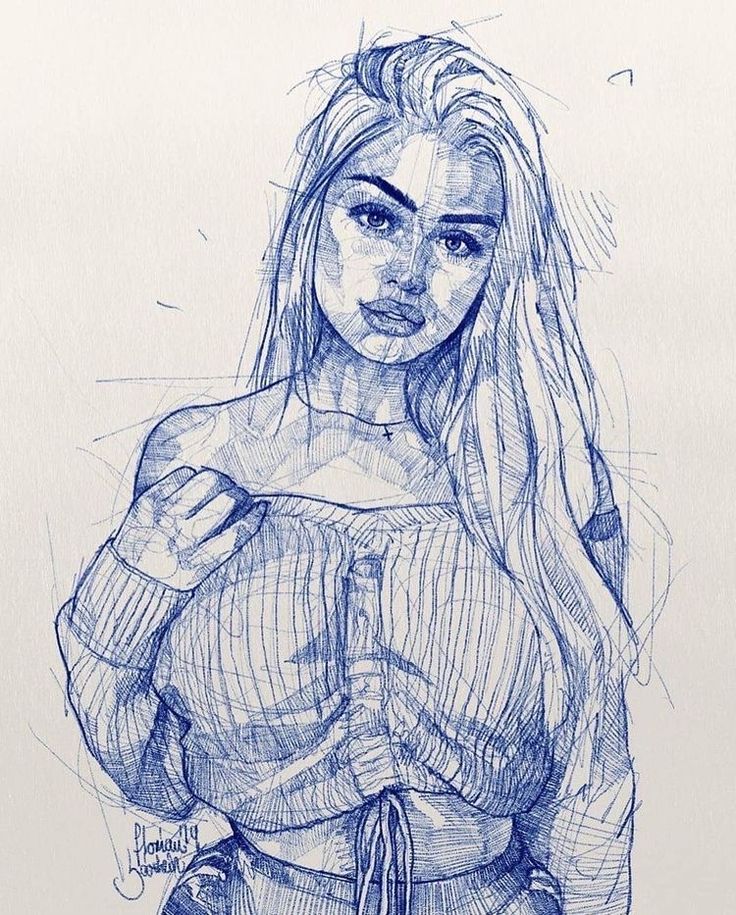
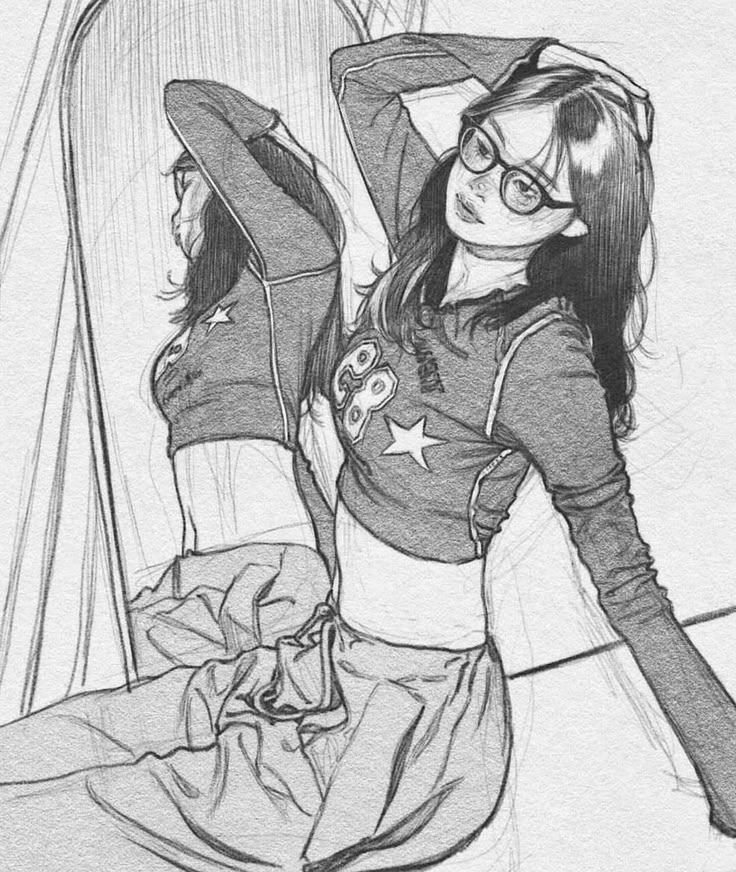
Creative Techniques and Artistic Approaches
Combining accuracy with style means using a variety of tools and methods. Selecting the right resources and formats helps you refine your technique and present your work in multiple media.
Using References and Models
Working from a reference or live model is one of the most reliable ways to capture correct proportions and posture. High-quality photo references and figure drawing sessions allow you to study how anatomy changes with light, weight, and movement.
To make your workflow efficient, consider keeping a digital reference library sorted by pose, attire, and body type. You can also pose a physical mannequin to study forms from any angle. For artists interested in realism or animation, mixing references with imagination helps develop an original interpretation while remaining anatomically accurate.
Some artists use themselves or friends as models to understand how muscle groups interact and where natural creases form. Life drawing classes are another option to improve your speed and confidence. Consistently practicing with varied references sharpens your eye for detail.
Exploring Vector and Graphic Styles
Vector illustration lets you create smooth, scalable lines that never lose quality, which is ideal for digital publishing, logo design, and large format prints such as canvas prints or framed prints. Tools like Adobe Illustrator and CorelDRAW are popular for drawing female figures in a vector style.
In vector work, you often use geometric shapes to block in the body, then refine outlines using pen tools. This approach works well for stylized and flat designs, making it useful for web icons, infographics, or branding materials.
Graphic styles can range from minimalist to detailed. Experiment with color palettes, gradients, or stroke weights to make your illustration distinct. Finished vector pieces are easy to adapt for different products, including acrylic prints and wood prints, due to their scalability and clarity.
Experimenting with Drawing Formats
Trying different drawing formats can shift your creative process and end result. Traditional paper and sketchbooks offer immediacy for rough concepts or gesture sketches, while digital tablets provide endless layers and undo options for refinement.
Testing out formats like canvas prints or wood prints changes how your female body drawings are viewed and presented. Digital illustrations can be enlarged and transferred onto materials such as acrylic or wood, producing a modern or rustic effect.
Careful consideration of format helps your art fit its intended display or usage. For formal presentation, framed prints maintain a polished look. Each medium offers unique texture, color response, and longevity, so select based on how you want your illustration experienced.
- 556shares
- Facebook0
- Pinterest556
- Twitter0

